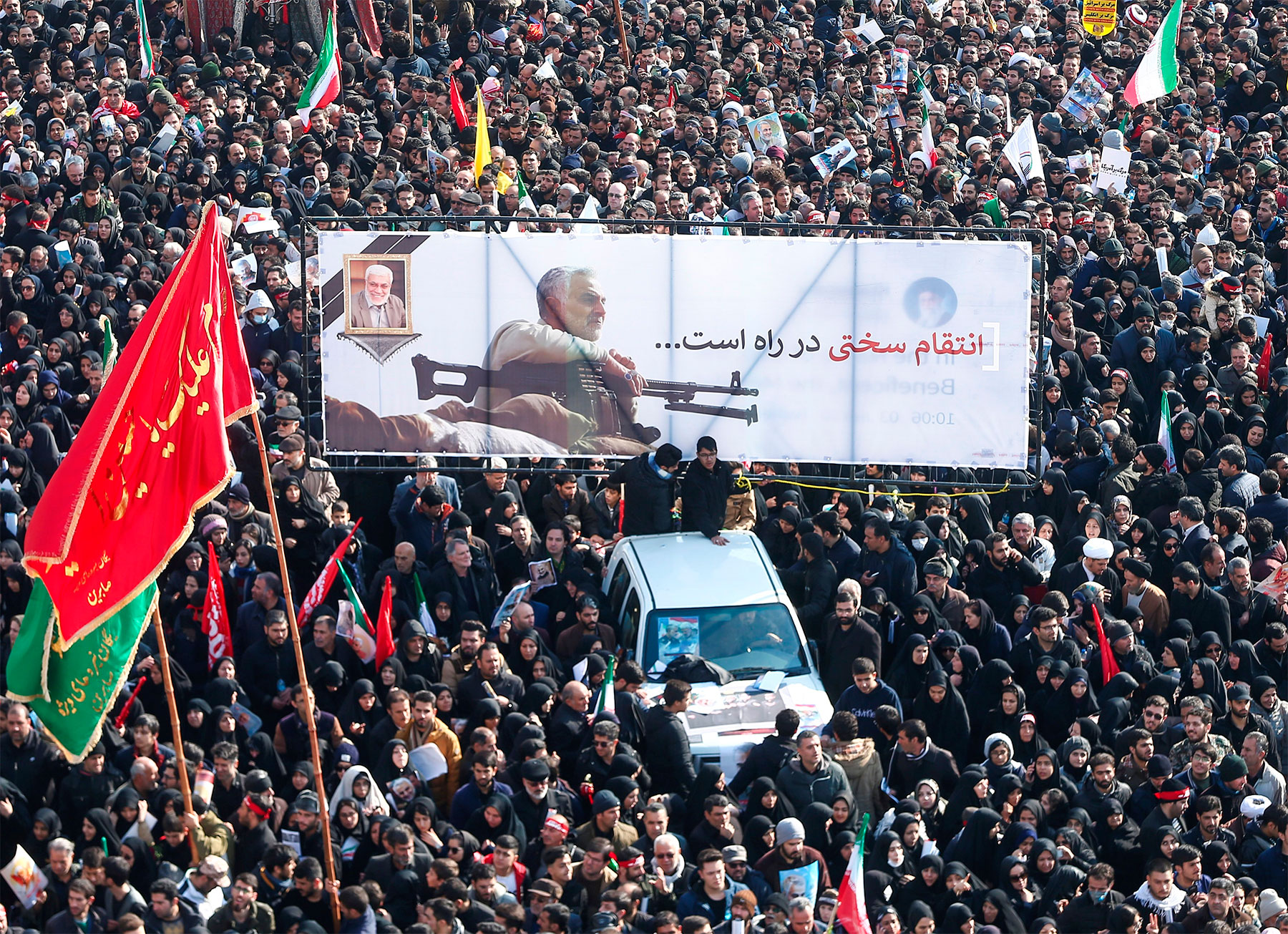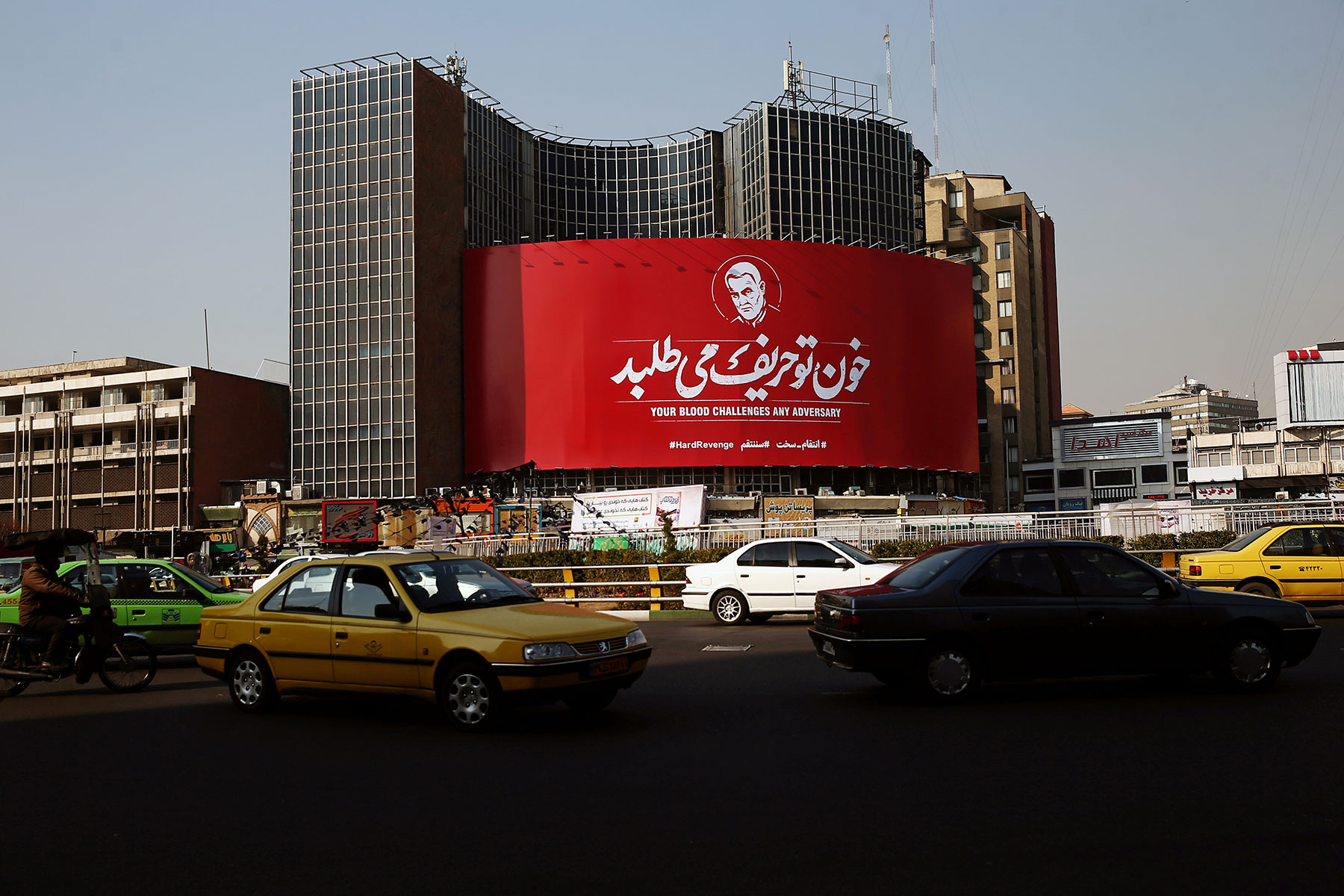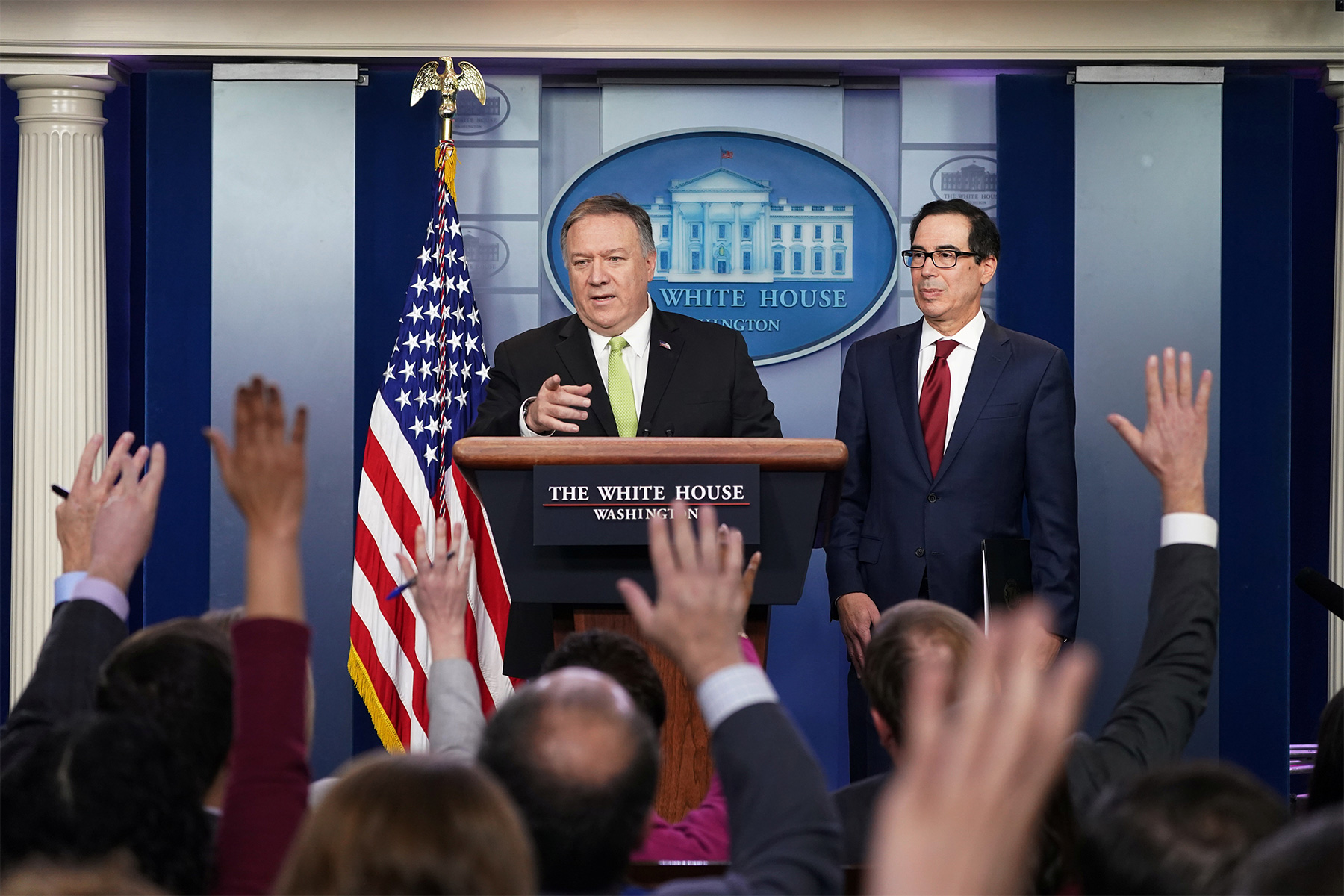The latest crisis in West Asia only underscores the international imperative and the region’s own conspicuous responsibility to find immediate and long-term solutions to the wicked security dilemmas of that theatre to stanch the recurring cycle of violence and conflict.
Already tense and divided along countless fault-lines, West Asia—from the Levant to the Iranian plateau—has been on high alert following the US assassination of Qassem Soleimani, the influential Commander of Iran’s Quds Force and Major General of the Islamic Revolution Guards Corps in Iraq.
Soleimani’s assassination was the latest manifestation of Washington’s maximum pressure policy on Iran, following US’ unilateral withdrawal from the Joint Comprehensive Plan of Action (JCPOA).
To be sure, the targeted assassination of a high-ranking military leader of a UN member state—and a regional power—is a major escalation in US-Iran bras de fer, dialling up fears across the region of a major conflagration.
This alarming development increased the risk of yet another costly protracted war in a region that can ill afford further instability.
The recent crisis has also not been without human tragedy and innocent loss of life. Some 56 Iranians were killed and more than 200 injured when a stampede broke out at the funeral procession grieving the demise of Soleimani in his hometown of Kerman. To add insult to injury, the accidental shooting of a Ukrainian passenger plane by Iran’s IRGC resulted in the untimely death of all passengers and crew on-board, raising the death toll by 176 additional civilian deaths—a calamity that ignited fresh protests in Iran.
These painfully tragic consequences notwithstanding, a costly devastating war that would have surely inflamed the entire region was averted—for now.
We must not lose sight of the fact that the conditions that led to this crisis in the first place are still very much present, and the status quo ante in Iran-US relations resumes.
There is no guarantee that the initial tit-for-tat exchanged between Washington and Tehran will not see additional clashes, either through conventional or unconventional means.
Unforeseen scenarios and unpredictable outcomes are also part of the equation as managing conflict is not an exact science.
Time will tell what awaits.
However, the speed with which this crisis escalated to the precipice of war must serve as a wake-up call.
This past crisis, which has the potential to reignite at any time, does not bode well for regional stability in the near and long term, and once again underscores the abysmal failure of the region’s dysfunctional security order.
Even if by a dint of fortune and fortitude, wisdom ultimately prevailed and a bloody march to folly was avoided in this instance, this is just the latest episode in a long series of security incidents and hot wars that have caused great human suffering and held the region back, weak and divided.
West Asia suffers from a regional systems failure in the absence of a sufficiently inclusive and viable regional security framework capable of preventing and defusing conflict.
This regional security gap must be remedied.
The latest crisis in West Asia only underscores the international imperative and the region’s own conspicuous responsibility to find immediate and long-term solutions to the wicked security dilemmas of that theatre to stanch the recurring cycle of violence and conflict.
Already tense and divided along countless fault-lines, West Asia—from the Levant to the Iranian plateau—has been on high alert following the US assassination of Qassem Soleimani, the influential Commander of Iran’s Quds Force and Major General of the Islamic Revolution Guards Corps in Iraq.
Soleimani’s assassination was the latest manifestation of Washington’s maximum pressure policy on Iran, following US’ unilateral withdrawal from the Joint Comprehensive Plan of Action (JCPOA).
To be sure, the targeted assassination of a high-ranking military leader of a UN member state—and a regional power—is a major escalation in US-Iran bras de fer, dialling up fears across the region of a major conflagration.
This alarming development increased the risk of yet another costly protracted war in a region that can ill afford further instability.
Contrary to its stated goals and expectations, Washington’s gamble aggravated the security environment for American troops and personnel, strengthened Tehran’s resolve to resist American presence and policies in the region, and effectively torpedoed any prospect of a negotiated settlement on the nuclear file, at least, in the immediate term with the current US administration. Washington’s tactic succeeded in pushing Tehran to further scale back on its nuclear commitments under the JCPOA as a counter measure, inching closer to abandoning the deal.
The political response from Iraq was also swift in the form of Parliamentary calls for, inter alia, the withdrawal of US troops from the country. All remains to be seen, as the votes cast are not legally binding on the caretaker government in Baghdad, and Washington is evidently exerting pressure to make it costly for Iraq to follow through.
In the meantime, Beijing has offered military assistance to Iraq to fill any security gaps. To be sure, China—heavily invested in West Asia and in its growing interests and relations with regional protagonists in the framework of the Belt and Road Initiative—does not want to see the region and its crucial waterways further destabilised. Last December’s naval drill in the Gulf of Oman, undertaken jointly by China, Russia and Iran, was an expression of that policy imperative.
Six days following the hit, Iran retaliated by taking the bold step of launching multiple home-made ballistic missiles directly from its soil aimed at military bases in Iraq housing US military personnel. The operation symbolically termed, “Martyr Qassem Soleimani”, was timed to coincide with when the US assassinated the Iranian commander.
Tehran delivered on its promise to exact revenge, hitting US military targets in Iraq. Iran reportedly avoided causing US casualties—Washington’s red line. Iraqi casualties were also avoided. Tehran evidently opted to prosecute a controlled conflict, carefully calibrating its response to save face, demonstrate its deterrent capabilities, while giving Washington an off-ramp to de-escalate.
Fortunately, the US climbed down the ladder of escalation, acknowledging there were no American casualties following Iran’s retaliatory response, labelling it as Tehran “standing down”.
While Washington did not escalate militarily, it announced additional sanctions against Iran, calling on other architects of the JCPOA to abandon the deal, further alienating its traditional Transatlantic allies. In response, the E3—the UK, France and Germany—rebuffed this call in a joint statement issued on the 12th of January, reiterating a “commitment to preserve the JCPOA”, yet proceeded to trigger the Agreement’s dispute resolution mechanism only a couple of days later. Tehran has interpreted this step as European capitulation to Washington’s maximum pressure policy. It has warned that should the file be referred to the UN Security Council, Iran will not only abandon the JCPOA, but will also consider exiting the Treaty on the Non-Proliferation of Nuclear Weapons.
The JCPOA—a key pillar of the international non-proliferation architecture and regional security in West Asia—now hangs by a thread.
The recent crisis has also not been without human tragedy and innocent loss of life. Some 56 Iranians were killed and more than 200 injured when a stampede broke out at the funeral procession grieving the demise of Soleimani in his hometown of Kerman. To add insult to injury, the accidental shooting of a Ukrainian passenger plane by Iran’s IRGC resulted in the untimely death of all passengers and crew on-board, raising the death toll by 176 additional civilian deaths—a calamity that ignited fresh protests in Iran.
These painfully tragic consequences notwithstanding, a costly devastating war that would have surely inflamed the entire region was averted—for now.
We must not lose sight of the fact that the conditions that led to this crisis in the first place are still very much present, and the status quo ante in Iran-US relations resumes.
There is no guarantee that the initial tit-for-tat exchanged between Washington and Tehran will not see additional clashes, either through conventional or unconventional means.
Unforeseen scenarios and unpredictable outcomes are also part of the equation as managing conflict is not an exact science.
Time will tell what awaits.
However, the speed with which this crisis escalated to the precipice of war must serve as a wake-up call.
This past crisis, which has the potential to reignite at any time, does not bode well for regional stability in the near and long term, and once again underscores the abysmal failure of the region’s dysfunctional security order.
Even if by a dint of fortune and fortitude, wisdom ultimately prevailed and a bloody march to folly was avoided in this instance, this is just the latest episode in a long series of security incidents and hot wars that have caused great human suffering and held the region back, weak and divided.
West Asia suffers from a regional systems failure in the absence of a sufficiently inclusive and viable regional security framework capable of preventing and defusing conflict.
This regional security gap must be remedied.
That task falls, first and foremost, on West Asian states to take greater ownership of the region’s security challenges and to devise regional remedial solutions through greater dialogue, diplomacy, emergency communication and security cooperation.
The inescapable fact is that the existing, non-inclusive sub-regional security structures in West Asia have been largely ineffective in bringing tangible, sustained security to the region.
The traditional US security architecture has also failed to ensure regional cohesion and the security and stability of the region in a sustainable and consistent manner over time. On the contrary, it has proved to be a costly experiment in blood and national treasure with the region bearing the brunt, and in many instances, the source of the region’s acute security dilemma.
West Asia needs a regional security reset that can foster preventative diplomacy and enhance regional security dialogue and cooperation.
Given the historic centrality and importance of the West Asian theatre to the peace and security of all of the connected regional theatres—and to international peace and security more generally—there is great urgency for practical steps to be taken to support West Asian states enhance the region’s capabilities, mechanisms and processes to prevent and manage conflict.
The crisis just lived, and the regional and international calls for de-escalation have provided a unique opportunity to bring the parties together for this purpose, and to work towards détente and rapprochement.
Different concepts and ideas worth further consideration are already on the table, including those proposed by Russia last summer, and by the Iranians at the 74th session of the United Nations General Assembly, otherwise known as the “Hormuz Peace Initiative”. The latter has received backing from at least two permanent members of the UN Security Council — Russia and China — while Iran is busy working to build support for the initiative in the region.
The Emir of Qatar visited Iran for the first time during the recent crisis, calling for de-escalation and regional dialogue. Other regional states are also on record stressing the need for a genuine inclusive regional process that aims to address the region’s polarisation and security challenges.
Throughout this unhappy saga, West Asian states and the international community writ large were on edge as Iran-US tensions escalated. The Secretary Generals of the UN, the Arab League and the Gulf Cooperation Council called for restraint and de-escalation, as did many West Asian capitals, including Riyadh and Abu Dhabi. Anxieties remain.
Easing tensions in the Persian Gulf regional theatre and creating incentives to commit littoral states to security dialogue and conflict prevention can be a crucial first step forward, and a major pillar of regional stability – with clear dividends for freedom of navigation and energy security.
For over a decade, I have personally persistently made the case for reimagining regional security in the West Asia. I have called for a decisive move away from zero-sum conceptions of regional security in favour of a sufficiently inclusive framework premised on common security, dialogue, and respect for the principles enshrined in the UN Charter, floating different algorithms for how the region can incrementally stitch itself together in the service of greater regional security, stability and cohesion. Indeed, a Helsinki type process for West Asia is long overdue.
Let me emphasise that there is room for more robust UN engagement to de-escalate the current crisis and assist the region to work towards regional security dialogue and understanding, including through the important work of the UN Department of Political and Peace Building Affairs.
The UN, in its neutral mediatory role, can helpfully facilitate an inclusive process that gives due consideration to proposals aimed at stabilising the region, including the Hormuz Peace Initiative, streamlining the different proposals into a single process under the UN umbrella.
As part of this UN response, consideration can also be given to appointing a special envoy of the Secretary General [pursuant to paragraph eight of UN Security Council Resolution 598 (1987)] with a specific mandate and full authority to work with states in the region and other relevant actors to bring the parties together—starting with an agenda dedicated to de-escalating tensions in the Persian Gulf theatre. The proposed envoy could work to commit the parties to design and implement confidence-building measures, as well as facilitate discussions on strengthening the region’s mechanisms for security dialogue and conflict management.
The EU, joined by willing members of the UN Security Council, can play a crucial supporting role in such a necessary effort.
The EU, in its own right, must feel more confident acting as a broker of peace in the region by continuing to engage with all sides, do what it can to preserve the JCPOA, and explore the opportunities afforded by that framework to facilitate greater regional security dialogue and de-escalation.
This latest crisis highlights, yet again, the imperative to act decisively in conceiving a new rules-based regional security order in West Asia—one built on dialogue and mutual respect, a commitment to non-aggression, and indeed, the vision of a shared future.
Reason and courageous leadership to realise that necessary condition must prevail.
The status quo has failed, and miserably so.
The original was published at the Institute for 21st Century Questions Expert Exchange: “What Does a West Asian Security Framework Look Like?”, featuring Andrey Kortunov et al.
The views expressed are the author's alone.









